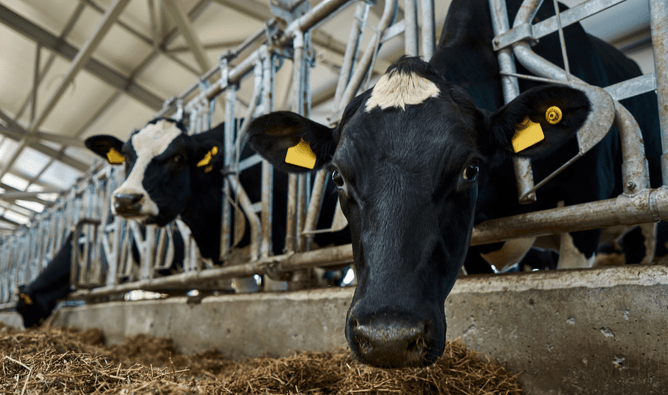Bovine viral diarrhoea (BVD) is a challenging and costly viral disease, affecting both dairy and beef herds in New Zealand. Cattle of all ages are at-risk, including the fetus of pregnant cows.
There are two types of BVD transmission:
Transient infection (TI)
This is when an animal of any age comes into contact with the disease and mounts an immune response. The infection lasts about 2-3 weeks, during which time the animal is shedding the disease, before clearing the infection.
If a bull gets a transient infection, it will affect his sperm quality for around 3 weeks and he will infect every cow he comes into contact with while infected.
Persistent infection (PI)
A persistent infection is formed when the fetus of a TI cow gets infected between 40-120 days of gestation. This calf will be a carrier of BVD for life and will shed high quantities of the disease during its lifetime. PI animals can sometimes be easy to pick, as they will often be smaller and sickly, however, some grow as normal and enter the herd.
The infection can result in different things, depending on the stage of gestation:
Early pregnancy (days 0-40) - early embryonic deaths
Mid pregnancy (days 40-120) - mummification, abortions, PI animals formed
Late pregnancy (days 120 – 280) - stillbirths, weak or stunted calves, birth defects.
How does BVD get onto your farm?
Buying infected stock
Bulls
Pregnant cows (trojan cows are those carrying a PI calf)
Heifers grazing off-farm
Contact over the fence with neighbouring stock
Contaminated equipment/clothing.
What can you do about it?
To help manage BVD on your farm, it is important to have a monitoring programme in place, which may include:
Bulk milk testing - if you aren’t already signed up for this, contact the clinic to do so.
Testing replacement calves.
Ensuring bulls have tested negative for BVD virus and have been vaccinated before arriving on-farm.
Vaccinating at-risk stock, especially heifers going away on grazing.
Checking boundary fences/ minimising over the fence contact with neighbouring stock.
Testing options
There are different options available for testing your stock for BVD, including:
Screening tests: Bulk milk testing
We do two tests via bulk milk:
Antibody testing – this is looking for herd ‘exposure’ to the disease. If this is high, it can give an indication there is a PI.
Antigen testing – this is looking for the ‘virus’ itself. Positive antigen means there is a PI in the herd, and we need to go on a PI hunt.
Screening tests: Blood sampling
We take blood samples from 10-15 animals in the mob to get an idea of exposure. Animals should be older than 10 months, and unvaccinated. If exposure is high, we would need to move to individual animal testing and do a PI hunt.
Individual testing:
Ear notching – a similar process to taking a DNA sample, we take an ear notch at any age (can be done at the same time as disbudding) to test for antigen (PI animal).
Blood sampling – again, this can be done at any age to check if an animal is a PI. The blood is pooled to make sampling more cost effective. If an animal has an individual blood test and is found to be negative for antigen (so is NOT a PI animal), this means they will never become a PI and these animals do not need to be tested again in their lifetime.
Vaccination
Vaccination is aimed at protecting the pregnant cow and her fetus from getting infected.
If your animals have not been vaccinated before, they will need two doses, 3-4 weeks apart. The first injection should be given about 8 weeks before the start of mating, with the second needed at least 4 weeks prior to the start of mating.
For animals that have previously been vaccinated, they will need an annual booster, to be given at least 4 weeks prior to the planned start of mating.

